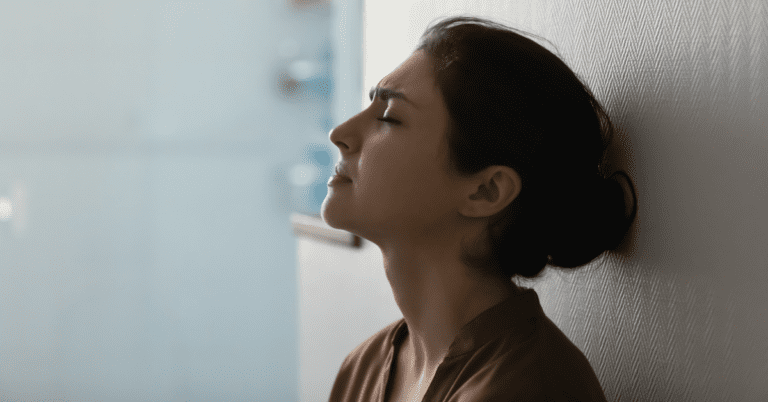Candace is a clinical research specialist at NOWINCLUDED who recently attended the Association for Hidradenitis Suppurativa Advances symposium. While there, she connected with individuals passionate about hidradenitis suppurativa (HS), from doctors and advocates to those living and thriving with this misunderstood condition.
In this article, she shares some key insights she gathered during her time at the symposium, offering a glimpse into the daily realities and unmet needs of the HS community.
The Daily Struggles
- Work and Flares: Managing work during HS flares is a major issue. The pain can be unbearable, sometimes forcing individuals to leave work. The impact on employment and income stability requires further compassion.
- Unmanaged Pain: Pain management is critically inadequate. People living with the condition often report their pain is dismissed or undertreated, even when reporting high pain levels. The inconsistent availability of pain medication and the reluctance to prescribe it are significant problems. Some resort to hoarding medication, fearing future flare-ups. While medicinal marijuana and CBD are sometimes suggested, prescriptions are often not provided, limiting their effectiveness for pain management.
- Persistent Discomfort: Phantom burning and itching, particularly at night, disrupt sleep and contribute to overall discomfort.
The Mental and Emotional Impact
- Self-Blame and Stigma: Individuals with HS often struggle with feelings of self-blame, believing they are somehow responsible for their condition. The stigma associated with HS, a “silent disorder,” furthers these feelings. The connection to Sweet’s syndrome, a rare skin disease, adds another layer of complexity.
- Relationship Strain: HS can negatively affect personal relationships due to pain-induced irritability, insecurity, and the constant challenges of managing the condition. Parenting becomes especially difficult.
The Financial Burden
- HS-Related Expenses: The financial burden of HS is substantial, encompassing mood care (therapy, acupuncture), various topical medications, and the need for specific clothing (often dark colors) to conceal symptoms. The unpredictable nature of flares adds to the financial strain.
The Healthcare System Challenges
- Ineffective Telehealth: Some members of the community feel that telehealth is not a suitable solution for managing HS.
- Importance of Walk-in Clinics: Walk-in clinics are seen as a valuable resource and a potential area for improvement in HS care.
- Lack of HS Knowledge Among Healthcare Professionals (HCPs): A critical need exists for more doctors with expertise in HS. Training programs, such as HCP training, are essential.
- Emergency Room Utilization: Many living with HS frequently visit the ER for HS-related issues (10-20 visits annually), highlighting a gap in consistent primary care. Medical schools need to incorporate more comprehensive HS education.
- Delayed Diagnosis: The average time for an HS diagnosis is 7-10 years, leading to prolonged suffering and delayed treatment.
The Need for Community Outreach and Support
- Need for Real Imagery: More realistic images of HS manifestations are needed to raise awareness and understanding.
- Targeted Outreach: Current outreach efforts are missing key demographics, including the 30+ age group, adolescents, and high school students (HS often begins around age 12). Strategies are needed to reach these populations through various channels, such as grocery stores, public transportation, and social media.
- Referrals and Resources: Newly diagnosed individuals need referrals to therapy and social workers for emotional support.
- Safe Spaces and Events: More resources, safe spaces, and community events (including senior centers and family-friendly activities) are needed to foster support and reduce isolation.
- Patient Navigators: Patient navigators who can assist both patients and doctors in navigating the complexities of HS care are highly desired.
What Happens Next?
The insights shared by the HS community vividly illustrate the complex challenges faced by individuals living with this condition. Beyond the physical symptoms, the emotional, social, and financial burdens are profound. Addressing these issues requires a comprehensive approach: better pain management, enhanced physician education, more effective community engagement, and increased access to support resources.
By elevating the voices of the HS community, we can strive towards a future where individuals with HS receive timely diagnoses, holistic care, and the support they need to lead fulfilling lives. The strength and resilience of this community are a testament to their unwavering spirit, offering invaluable guidance for researchers, healthcare providers, and advocates dedicated to making a meaningful impact in the lives of those affected by HS.
“This community is truly composed of fighters and survivors. Their resilience and determination to improve the lives of those affected by HS was inspiring.” – Candace
You Might Also Like:

Don’t Ignore These 5 Skin Changes
Ignoring certain skin changes can mean missing important signals your body is sending. Let’s talk about five skin changes you shouldn’t brush off, and what they might be telling you.

5 Things That Worsen Hidradenitis Suppurativa (HS) Symptoms
While there’s no cure for hidradenitis suppurativa (HS) yet, identifying and avoiding these triggers can help manage symptoms and improve quality of life. #2 may surprise you!


